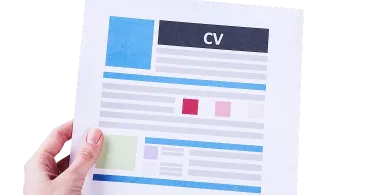Table of contents

A cover letter and resume are a united set of documents necessary for any job seeker. Although they go together and complement each other, these papers have important distinctions.
Both a resume and a cover letter give a job hunter a possibility to market his skills to the employer. However, they have different purposes, formats, and writing styles. The mistakes in writing these documents could show that a candidate is not aware of business etiquette. How to avoid it?
Luckily, the best resume and cover letter writing service is ready to explain the main differences between a resume and a cover letter.
The difference between a cover letter and resume becomes clear once you realize their functions.
✎ A resume summarizes the key details of your career history and presents it to the hiring manager. It includes your contact information, education section, work experience, certifications, and skills. It has to be concise and comfortable to read fast.
✎ A cover letter gives additional information and explains why your qualifications match perfectly this job position. A cover letter helps to interpret the bulleted points of your resume. It also shows how described experiences qualify for the job position.
Thus, if you are writing something like a customer service cover letter, it should promote a particular set of qualifications necessary for this position.
Before emailing a cover letter and resume to the employer, check if they are written in the correct format. The structure and format brightly show the distinctions between these two documents.
✎ A resume is usually written in the form of a bulleted list, which helps to read it quickly and scan electronically. The resume consists of several small paragraphs written in the third person.

While listing the facts about your career history, it is necessary to provide numbers. Indicate how many workers you supervised or what percent of sales you achieved.
To make sure everything necessary gets included, you shouldn’t skip the resume outline writing step.
✎ As for the cover letter, it is built in the form of a business letter, which should be personalized and persuasive. The first-person is used to write a cover letter.
The structure includes the salutation, introduction, a few paragraphs, and closing. The standards demand that you address your cover letter to a hiring manager, including his name. It could be found on the company’s website or social networks.

A cover letter and a resume should present information differently. The key distinction is the subjectivity and objectivity of the content.
✎ A resume provides facts to the reader. It should give a clear understanding of who, when, how, and what. All the key information about your career should be included here. The details presented in a resume should be objectively expressed with short but informative phrases.
✎ A cover letter conveys personality and contains subjective information. It may tell why you chose this company, what your motivation is, and how your values and goals match with this position.
Think about what the employer needs to find in a candidate, and write a cover letter matching the expectations.
Also, make sure you know all the tricks of ATS-friendly resume writing!
You may see now that the difference between a cover letter and resume is significant. Keep these distinctions in mind while writing these documents.
Despite these peculiarities, there are some common requirements for a cover letter and a resume. Both documents should contain keywords and have proper grammar and spelling.
The best way to find keywords and power words for a cover letter and resume is to analyze the job description given by the hiring manager.
Determine the key phrases and requirements and then include them in your resume and a cover letter.